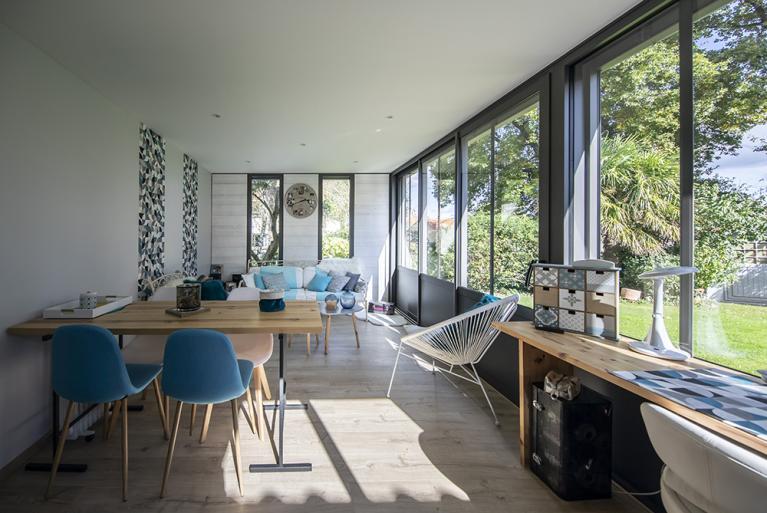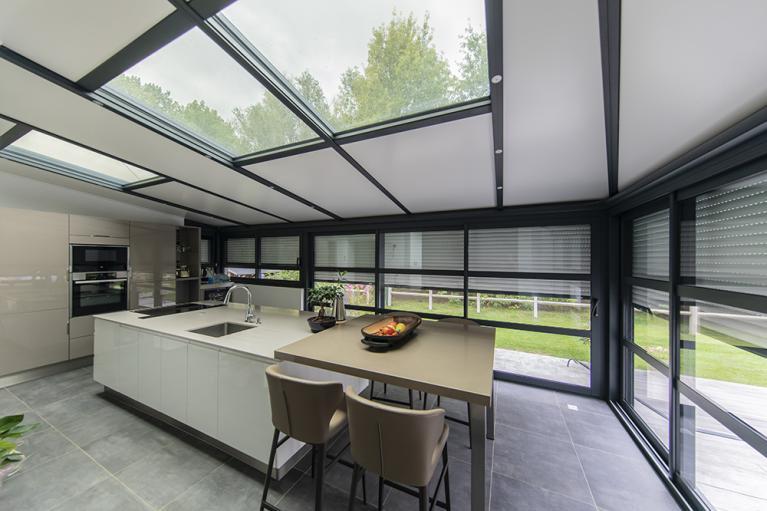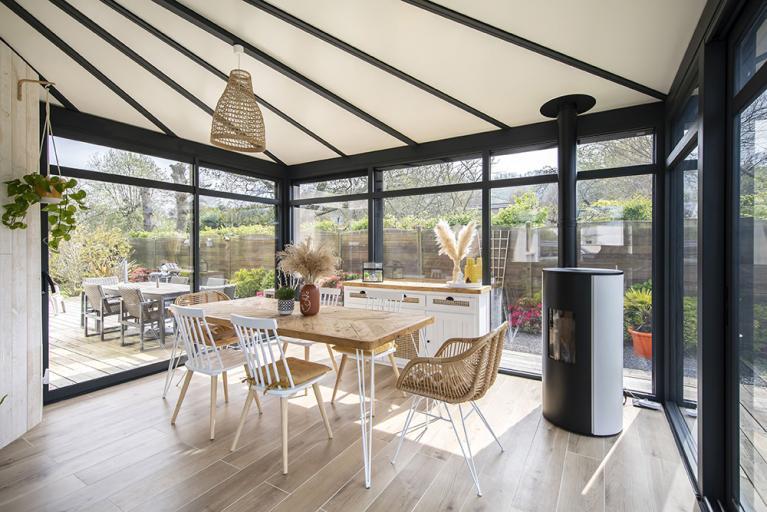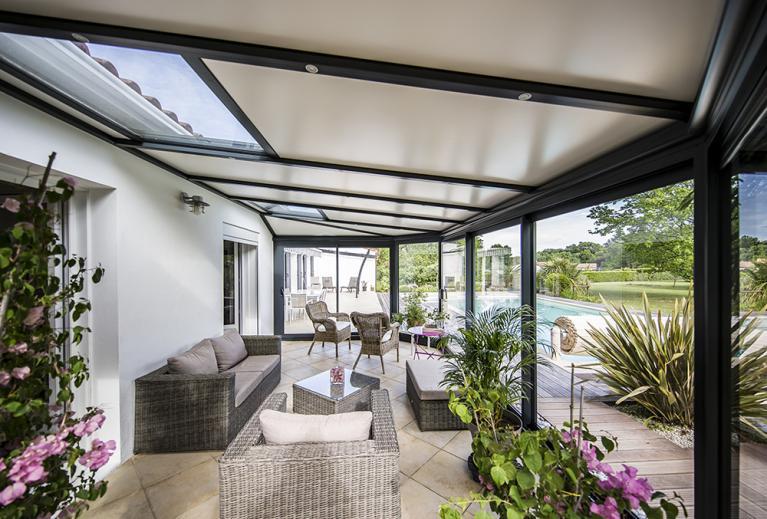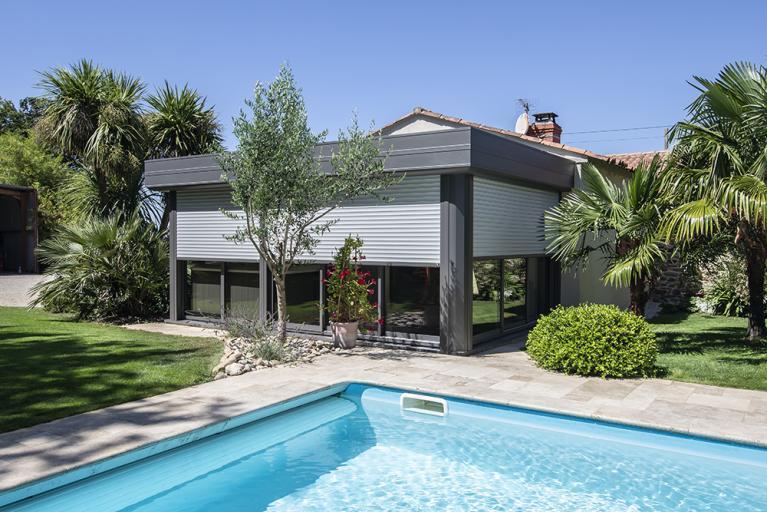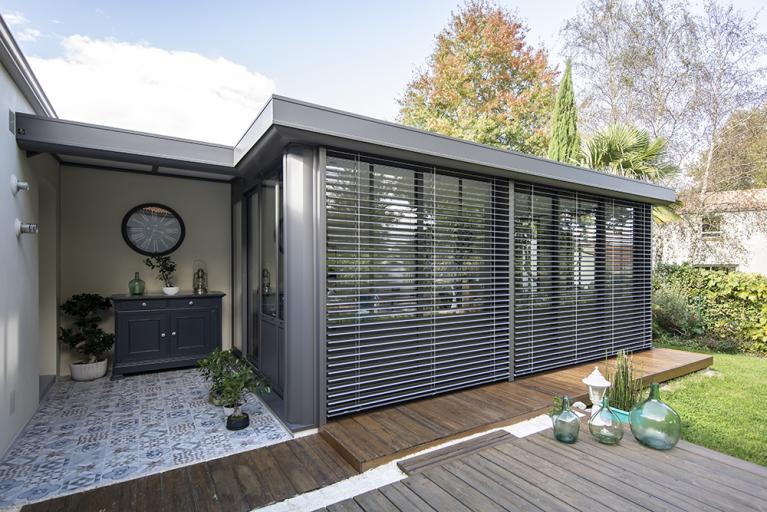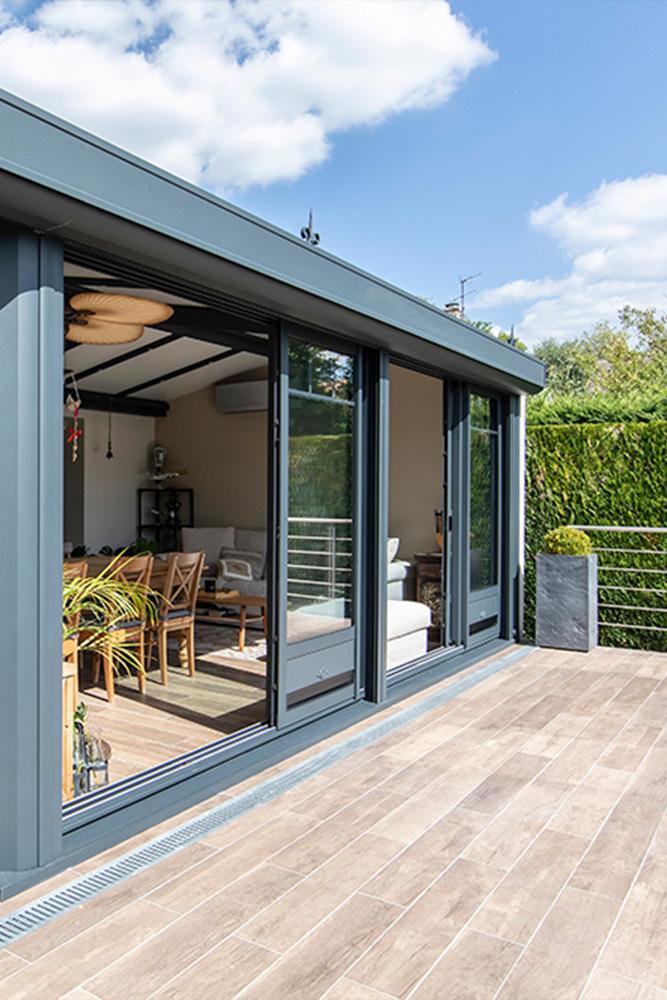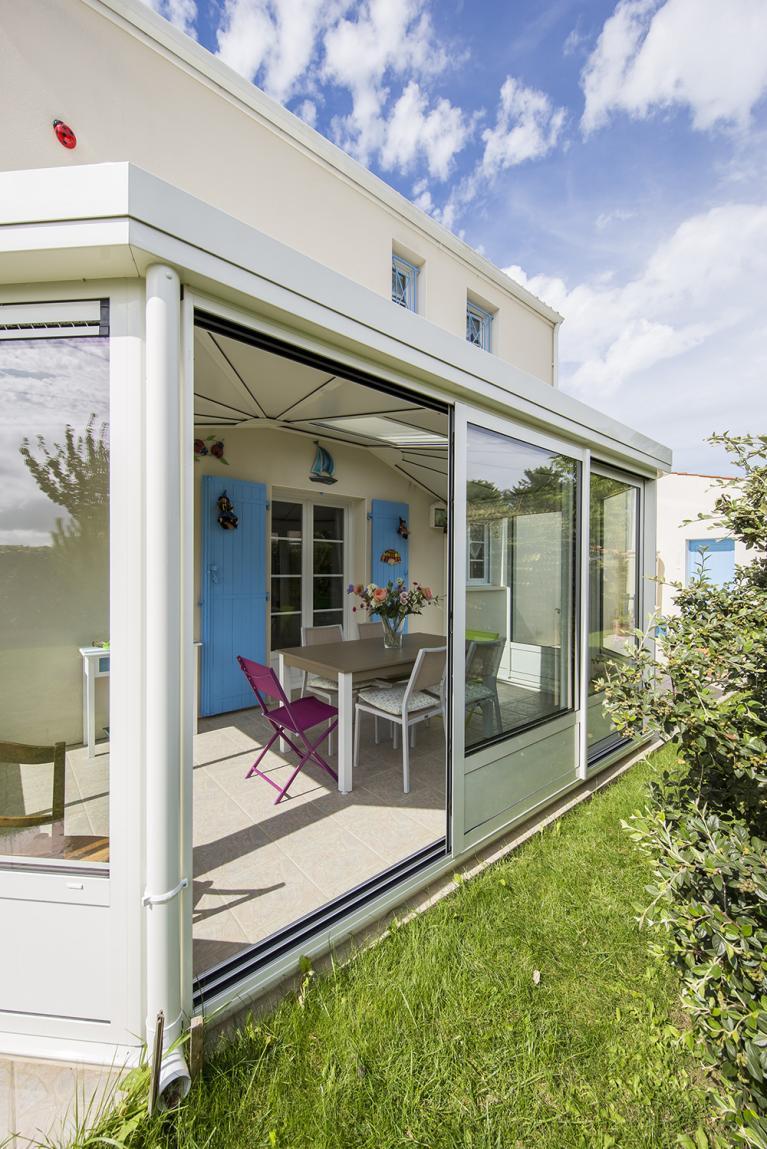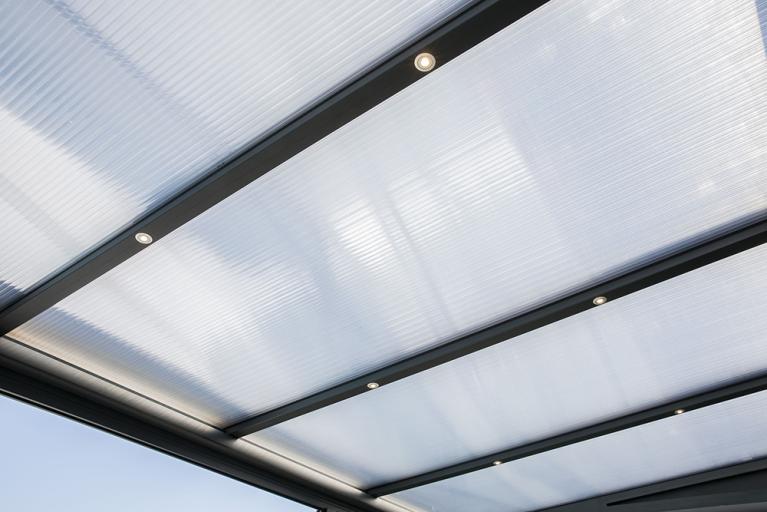What's the difference between an extension and a conservatory?
You had your conservatory built a long time ago. You may even have bought your house and the conservatory was already there. It's probably in need of renovation.
As with every room in a house, taking care of your extension will keep it clean and charming for a long time to come. However, the seasons, the weather and everyday life will inevitably damage the materials used in this living space. Then it's time to give it a facelift!
The extension: a continuation of your house
The Cambridge Dictionnary gives us this definition of extension:
The fact of reaching, stretching, or continuing; the act of adding to something in order to make it bigger or longer.
It is therefore an extension of your house, perfectly integrated into it. It is usually made of brick, breezeblock or wood, but can also be built in aluminium. It has a flat roof.
Building an extension harmonises your interior while creating additional living space. It has fewer glazed areas than a conservatory and more wall space.
Kitchen, living room, master suite, bathroom or studio - anything is possible. An extension is an excellent way of extending the walls of your house if you want to have access to the outside while maintaining the same level of integrity as the existing building.
In terms of insulation, this part of the house will have the same performance as the rest of your house. From floor to ceiling, the thermal insulation (and soundproofing) will be carried out in the ‘classic’ way. The ideal heating system for this type of improvement is underfloor heating. It will provide all the warmth you want in your home.
In terms of completion time, this is generally longer than for a conservatory. Its construction requires a certain amount of harmonisation. It should not be built as an independent part of your property.
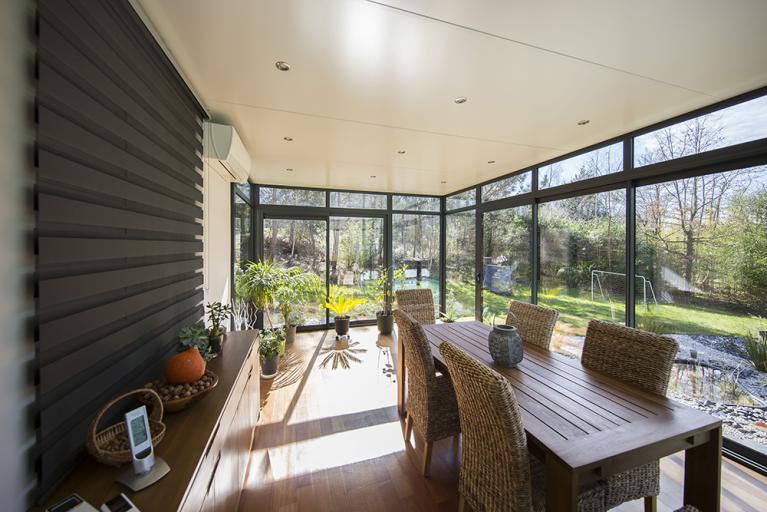
The conservatory: light and conviviality
Still according to the Cambridge Dictionnary, a conservatory is a room with glass walls and a glass roof, usually connected to a house, used for growing plants or for relaxing in.
By definition, a conservatory is an additional room that can be fully customised because it is independent. It is made to measure.
With its large picture windows and minimalist joinery, it offers an incomparable view of the outside world and plenty of natural light. Like its cousin, it can be built in a variety of materials,aluminium being the most popular for its lightness and modernity.
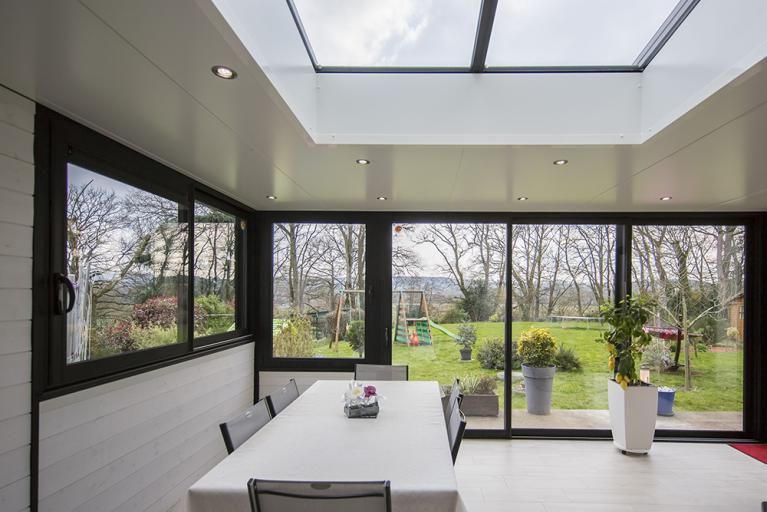
Insulation and thermal performance
As a living space, insulation needs to be carefully considered when choosing glazing. Thermal performance will vary according to the materials used. But rest assured, the glazing used today benefits from the latest technology! (Depending on your needs, the conservatory can be a transitional room between your interior and your garden, or an additional room. Protected from the elements, you can convert it into a kitchen area, a wellness area, a cocooning area... The choice between an extension and a conservatory is above all a matter of taste. Conservatories have become living spaces, so they are convivial, heated and bright. Extensions are an integral part of the home, providing additional living space.
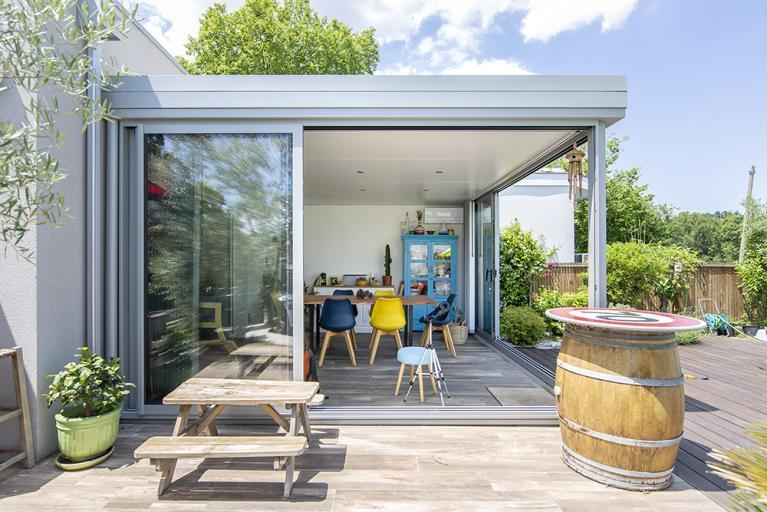
Budget & legislation
In terms of budget, the extension will be more expensive given the materials used.
Legislation-wise, there's no difference. Both types of extension are subject to the same regulations:
- a declaration to the town hall for a surface area of less than 20 m² (215 sq. ft.)
- an application for planning permission if the surface area exceeds 20 m², or if the floor area after enlargement exceeds 150 m².
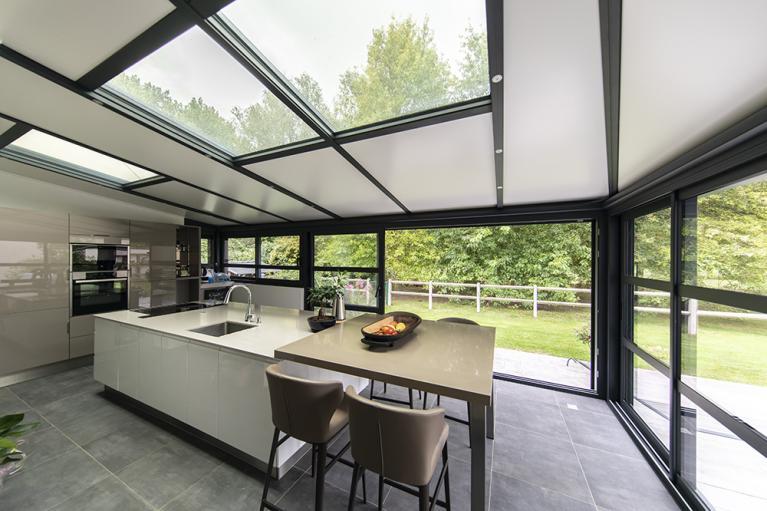
Extension or conservatory?
Whether you opt for an extension or a conservatory, it will considerably increase the value of your property.
Don't hesitate to call in a professional. They'll be able to tell you straight away what kind of enlargement project is feasible for your home.
Read all the articles in the magazine
You have a project?
Would you like a personalised 3D study and a free quotation? Contact us by clicking below.
AKENA is...
Over 40 years of experience
Founded in 1981 by one man, we now have more than 500 employees dedicated to making your project a success.
Made in France
A historic site and two factories covering more than 25,000 m² in Dompierre-sur-Yon in the Vendée region (85)
Innovative and tailor-made products
At AKENA, we are brimming with new ideas to improve and enhance our products.
The European leader in conservatories, pergolas...
But not only! AKENA also offers a complete range of carports and pool houses.
